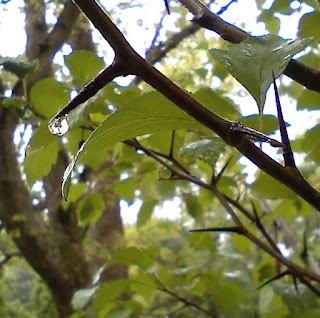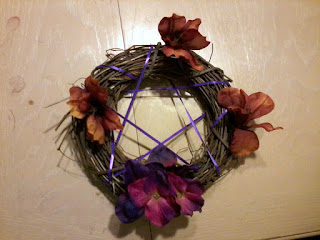 |
| Hawthorn in the rain |
I have been saying for awhile now that I need to pull back, do less, and remember how to relax; instead I scheduled this past week to the limit. The universe, with its epic sense of humor added in a comic series of car problems and computer issues to spice things up. In pushing myself to the extreme of commitments it really drove home to me that I have got to make some changes in my life. It's been so long since I relaxed and just had fun that I really can't even remember what those things are like, beyond a few minutes here and there. I value the concept of fun, yet I am a horrible example of embracing it. This past week of utter scheduling madness drove home to me that something has to give and I need to get the fun back. I realized that I have made doing things for everyone else a priority and I let every day go by telling myself that tomorrow I will do the things I want to do...except, that "tomorrow" rarely seems to arrive.
This reflection is no doubt influenced by the news that someone I knew had died, losing a sudden fight with cancer. I had not even known he was sick, so the news that he was gone was truly shocking. He was the sort of person that made you smile and enjoyed making other people happy. The world is a poorer place without him in it.
Thinking about his death did emphasize my own way of spending all my time on others and none on myself. I am horrible at making myself a priority and I am just as bad at relaxing and enjoying my time. It also made me realize that I should be more grateful for the good things I have in my life, when it is so easy to let the negative overwhelm everything else. To this end I have begun starting every day by acknowledging one specific thing in my life that I am thankful for. I spend at least a few minutes really thinking about what that means to me and for me and how I can make sure that I am honoring it in my life. This morning's focus was gratitude for a women's spirituality group I co-run with a friend and the insights that are gained by having a peer group to meet with and talk to. I am truly grateful to have the people in that group in my life and to have the group itself as a resource and support.
That group met last night and discussed energy, energy work, how we manifest positive or negative in our own lives, and good and bad experiences we have had. In the course of talking about one of the worst experiences I have had I gained a profound insight into what drives me to want to know how to handle any situation or answer any question. When I was 16 I accidently got a friend possessed by an angry ghost during a very ill-advised late night attempt at a seance (my idea); at the time I had no idea how to fix it and was very, very lucky that it ended well when it could have gone very badly. People in my life now tend to see my knowledge and willingness to find answers to their questions as a positive, but I realize after last night that it is driven largely by fear of letting other people down or of failing them. I am still unsure how exactly this knowledge will play out in my life, but I think that it does contribute to the pressure I put on myself. I need to learn to relax, and perhaps part of that is also letting other people be responsible for themselves instead of playing out an 18 year old guilt driven by this feeling - this burden - of trying to make up for a long past mistake.
In other good news my oldest daughter turned 9 and I had an absolute blast on the New Normal podcast. I saw several friends I have not seen in far too long. And I have, maybe, started to really understand where my priorities need to be in life and what actually matters.
I encourage everyone to do some reflecting on your own lives and how your time is spent - what you find might surprise you.
.jpg)





